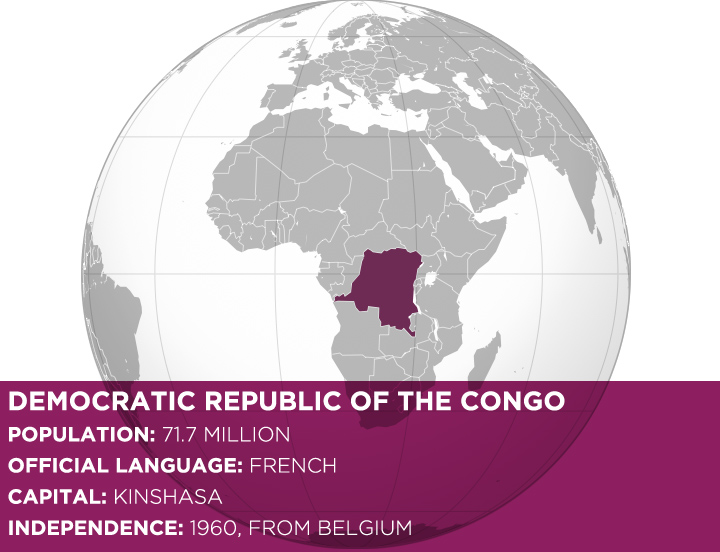
The Congo. A tough place, indeed. In 2005 I briefly stepped foot across the border of Rwanda into this lush, dense, jungle land that is the heart of Africa. I was there doing humanitarian work, and it was exhilarating and tragic and real. I met strong Africans who told me stories of the violence and genocide that rocked Rwanda in the 90s, and the troubles that plague the Congo to this day. Though a peace accord was signed in 2003, fighting continues in Congo, and an estimated five and a half million people have been killed in the warring there. Human atrocities of a truly shocking order have occurred in this troubled land. A country of 71 million people, it is by most accounts the most corrupt large country in the world, and one of the poorest. But in a sick irony, the Democratic Republic of Congo is widely considered to be the richest country in the world regarding natural resources; its untapped deposits of raw minerals are estimated to be worth in excess of US$ 24 trillion.
Through all of this tragedy, I was incredibly moved by the strange and powerful photographs from Richard Mosse. I hope this brilliant and bizarre exhibit can help to draw attention to the heart of Africa. Via Coolhunting:
As pro-am DSLRs and post production software make photography increasingly accessible, photographer Richard Mosse seems set on making his life more difficult. Armed with dead-stock Kodak infrared film—originally developed to detect camouflage for military aerial surveillance—Mosse ventured into the heart of the Congo to take some pictures. The forty-year-old technology was a cumbersome addition to his rural exploration, with Mosse playing the role of a time-traveling photographer under the hood of his camera. Consciously drawing from the photojournalistic tradition, Mosse’s collection “Infra,” on display at NYC’s Jack Shainman Gallery through 23 December, is a revisitation of familiar themes. He plays a dangerous game, trying to imbue life into themes so commonplace that viewers have become apathetic. The result is a new meditation on the problematic genre of photojournalism in regions plagued by conflict, one that uses art to decontextualize the familiar.
The obvious narrative is simple. Hardened rebels stand among expanses of eye-popping magenta, a comic irony that contradicts the gravity of war. Mosse is using a discontinued technology to revisit an old yet ongoing problem, creating a dialogue between the generations of inhabitants affected by war and the omnipresent lens of western civilization. “Infra” forces the viewer to look with fresh eyes at images to which they have become blind. This experience holds true not only for viewers, but for Mosse as well. Without the perspective of his camera’s infrared film, Mosse experienced his subjects for the first time during development.
Beyond the political ramifications of his work, Mosse’s images are compositionally stunning. His ability to find geometry in figures and landscapes is especially apparent in infrared, where the contours of trails and human limbs soberly interrupt the mass of color. While child soldiers supply the initial interest, Mosse’s landscapes are the surprise pleasure of the exhibition. Vegetation gives off a high amount of infrared light, which makes the Congo’s lush terrain a particularly gorgeous subject for Mosse’s lens. A stunning 3×3 series showcases the fragile structures of the Congo, lending valuable insight into village life.








